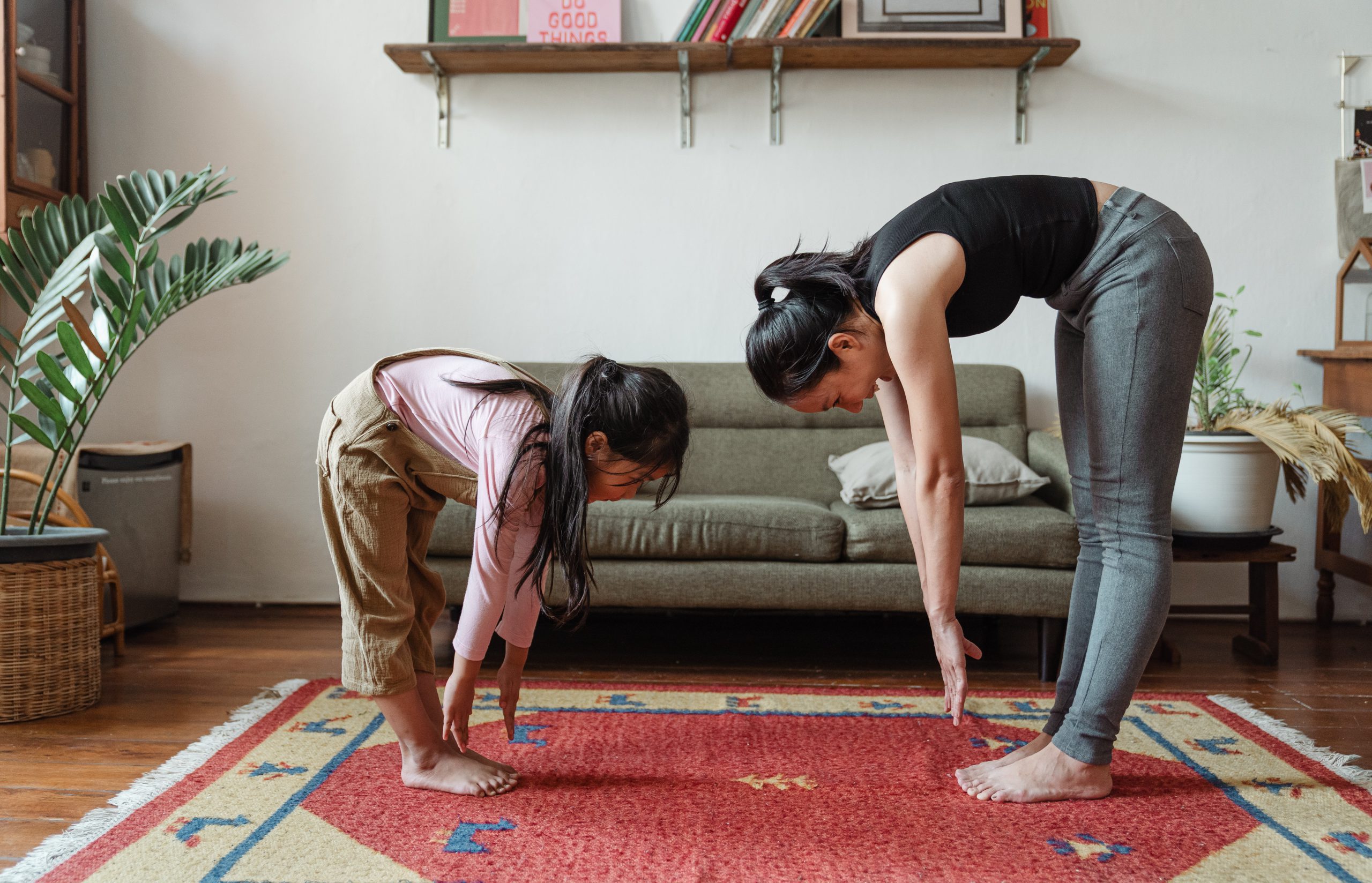When you prepare for online lessons, you focus on what your students will learn. But what about their physical needs? It feels like your class are stuck to their screens–but do they have to be?
Children get bored sitting at a desk all day. At school, they move around the classroom and spend break times running outside. When they learn from home, exercise can be more limited. They lose focus and motivation.
Concerns about online learning and health
We’re not built to sit down for long. Children are naturally active and learn by engaging all their senses. Younger children need to build essential fine and gross motor skills. They can’t do that if they’re sitting at a desk all day.
There are hosts of health concerns about children sitting at a computer too long including eye strain, back and neck pain, and repetitive strain injury (RSI). We also have increased numbers of children diagnosed with childhood obesity. Building in opportunities to get active is essential to combat the risks to young people’s physical health.
With a little creativity, we think there are lots of different ways to get your students moving whilst they’re learning. We’ve got five great ideas to get you started.
1: Plan interactive activities
Live online lessons shouldn’t be spent passively listening to your presentations. Build in fun ways for them to get active.
Try:
- ‘Show me’ games where students hold up their answers to the camera
- Miming games and actions
- Standing up/ down to show your answer
- Creating physical actions to link with new vocabulary
There are plenty of ways to get your students active in the lessons they access in their own time, too. Encourage them to find alternative equipment using things around the home, or get out into nature, and start learning in a practical way.
2: Add in movement opportunities
Treat your lesson as a series of small chunks of time rather than a traditional hour long lesson. The younger the students, the shorter each section needs to be. This creates the perfect opportunity for short movement breaks between each task.
You could use:
- Mini-exercise routines
- Yoga for kids
- Dancing time- take requests of popular songs
- Desk exercises
Why not link your activity breaks to the current learning? You can provide students with a different way to remember key information. It’s a great way to use cognitive load theory to maximise learning.

3: Timed challenges
Just using a simple timer can add a sense of excitement and motivation to a task. Give your students a short countdown for them to complete an activity, find something in their house, or display the correct answer. Use house points and other classroom rewards to celebrate their success.
Scavenger hunts around the home are an excellent way to get your class out of their chairs and moving around the house. Adding a timer means you won’t lose the pace of your lesson and guarantees the students will return a lot quicker.
4: Photograph work
Do you find you always set work that requires typed answers? You force your students to stay sat at their desks to complete the work. Have you considered using photographs as evidence instead?
Most students have access to a smartphone and will easily be able to take photos. Set them a practical challenge and ask them to upload photographs of them completing it. They could add their images to a shared platform or send them by email. It’s a lovely opportunity to get them outside and learning from nature.
Remember to check your school’s safeguarding and visual image policies before asking students to send photos to you.
Think about:
- Are students allowed to take photos of themselves?
- Do they know to only take photos in communal areas, never bedrooms?
- Are they uploading images to a secure area?
- Could other students or parents make copies of the images?
You’ll have to train your class to take effective photographs so you can see the work they’ve done. Talk to them about zooming in, framing their subject, and making sure images aren’t blurry. You could even record a short how-to video for them to watch.
5: Blended learning
Consider the balance you’re creating between live and asynchronous lessons that students access in their own time. Live lessons need to be as short as possible, engaging, and collaborative. Self-directed learning can be longer, more active, and practical.
Instead of treating these different types of lessons as separate to each other, think of ways to blend the learning experience. Try flipped learning where students come to a live class ready to talk about the studying they’ve done in their own time. Alternatively, launch a new concept in a video lesson and ask them to take it further in independent learning time.
Final thoughts
Are you worried your class aren’t getting the physical activity they need? Just making a few simple adjustments to your lessons is all it takes to get them moving.
- Add in movement breaks between sections of the lesson
- Make live video lessons short and to the point
- Use photographs as an alternative to typing answers
- Plan active tasks for students to complete
It’s been a challenge to adjust to virtual teaching. You’ve had to learn new technology and adjust your usual lessons to take them online. Getting your students moving easily slips down your to-do list. But now’s the time to make it a priority. Let’s get children learning in a fun and active way.
At Wacom we support all teachers as you move to online teaching. Our pen tablets let you draw, annotate, and highlight using all your favourite programs. Find out which Wacom product is right for you.





